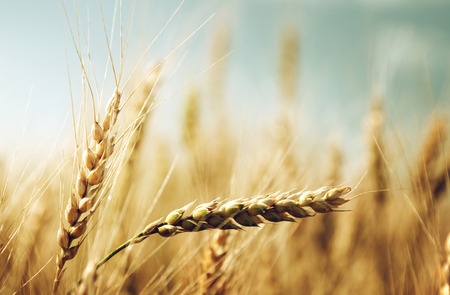
Measuring deoxynivalenol (DON) or vomitoxin (CAS no. 51481-10-8) as it is also known is important because it has become a widespread contaminant of many feedstuffs. It is a mycotoxin, a type B trichothecene produced by many Fusarium species along with a few other fungi. It tends to be isolated in grain based foods having been found in wheat, barley, sorghum, rice and oats. It is highly toxic, especially for livestock, and pigs in particular because it upsets the immune system and causes food refusal and vomiting.
In biochemical terms, it binds to ribosomes, inhibiting protein synthesis. DON is often associated with other Fusarium produced toxins such as fumonisins, zearalenone and nivalenol. Some very good sites present data on the subject (see Canady et al.,) especially the published research on toxicological effects in animals.
There is an important opinion by the Scientific Committee on Food of the EC on this particular toxin that is worth consulting (EU Opinion, 1999). The EU advise that DON levels must be less than 0.2 ppm for processed cereal derived foods especially for young children, and less than 1.75 ppm for unprocessed wheats. The US Food and Drug Administration likewise, have also established levels of DON for contaminated grains and their products. For humans, the US FDA has advised that levels should be no higher than 1 ppm for wheat products, 5 ppm for animal feed products and 10 ppm for grain products destined for cattle feed.
A number of rapid, sophisticated and sensitive techniques have been developed to not only identify the contaminant but quantify it. A recent review covers the wide range of testing for mycotoxins generally (Maragos and Busman, 2010). A number of companies produce test kits for the toxin e.g. Vicam.
References
E.U. (1999) Opinion On Fusarium Toxins. Part 1: Deoxynivalenol (DON) http://ec.europa.eu/food/fs/sc/scf/out44_en.pdf Accessed 13/02/2012
Maragos, C.M., Busman, M. (2010) Rapid and advanced tools for mycotoxin analysis: a review. Food Additiv., Contam.,: part A 27(5) pp. 688-700
USDA Internet: http://www.cfsan.fda.gov/~dms/graingui.html accessed 13/02/2012
I have always been suspicious of people who have a back yard distillery because they take poor grain which I think has been contaminated with molds and the like. The waste grain was used as feed for animals and I’ve seen them get sick as a result. I certainly never recommend anyone taking spent grain from an unregistered distillery.